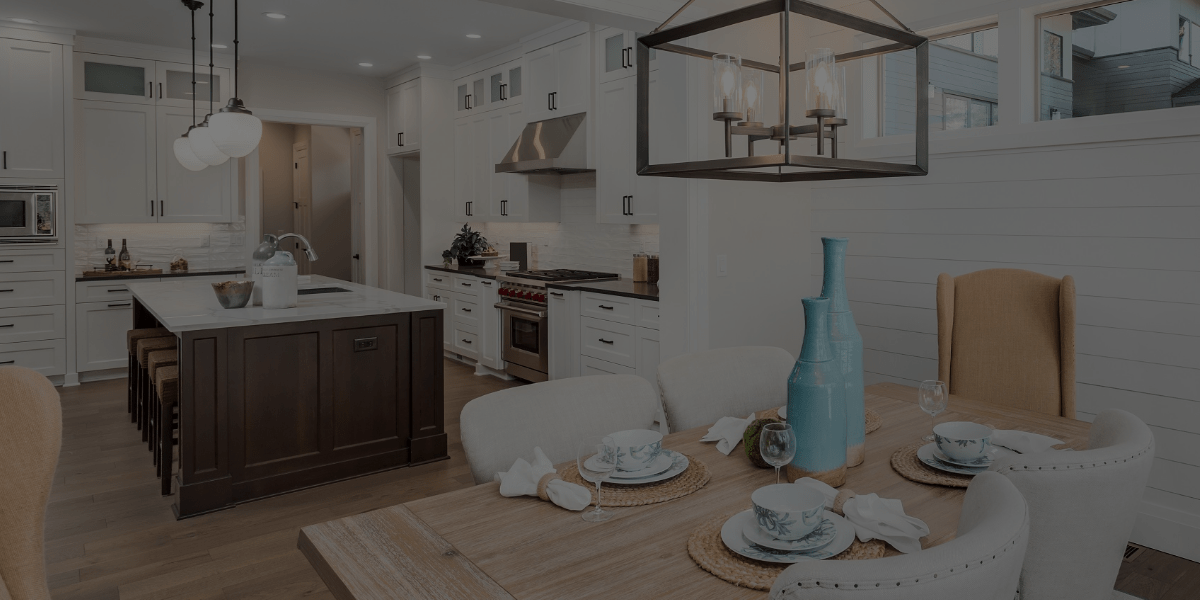Lianne Cousvis is a graduate of QC Design School with certifications in decorating (IDDP), home staging and redesign (ISRP), color consulting (ICCP), and professional organizing (AIOP). Lianne grew up in the Bahamas, where colors are celebrated and regularly utilized. She now owns her own design company, ChiChi Fringo Designs, in Toronto, Canada.
Staging homes is an incredibly rewarding process! As a professional home stager, you get the privilege of helping clients make their home as aesthetically pleasing as possible. Especially when that home is going on the market, what you do can help increase its overall value – ultimately, making it sell for more money!
That being said, there are certain obstacles you can face while working on a project. Here are 3 of the most common, with tips for how you can easily overcome them.

Easily, one of the most frequent drawbacks you’ll run into when staging homes is the budget. This is because some people mistakenly see hiring a stager as an ‘unnecessary’ expense.
As such, they may come to you with unrealistic expectations. Some clients will want results that far exceed the amount of money they’re willing to spend.
In other cases, you may need to think outside the box. It’ll be up to you to find ways to be creative; stretching the budget to maximize the results, and making every penny count.
Importantly, you don’t want to blow your client’s entire budget when getting the job done!
Where costs add up
The process sometimes requires furniture that’s not in the home already. This could be due to scale, color, or a particular style of furniture that is not appropriate for mass appeal.
In this event, you may need to use furniture from your warehouse, or a rental company. You’ll also likely have to pay someone to safely store the client’s furniture after it’s removed from the home.
Other common factors that will need to be discussed with your client are:
- A freshly-painted home is a MUST before selling any home. Often, a stager will pick out the perfect shade to work in the space. Other times, they’ll need to confer with a color consultant.
- Fresh flowers and landscaping – in order to create curb appeal – must be addressed.
- Fresh linens and lots of pillows are recommended for beds, couches, etc.
- Artwork may be needed on some of the walls.
- Accessories can create vignettes, which are visually appealing. Your client may want to add those in as well.
The list goes on and on… But the point is, all of these things cost money!
On top of all this, there needs to be enough money in the budget leftover to pay yourself once the job is done. Otherwise, what is the point?

How to overcome this obstacle
Many people find it hard to imagine WHY they’d need to spend money in order to get their housed staged to sell. So, in terms of working around this drawback, I feel like this is the strongest place to start!
One way to convince people that having their home professionally staged is well worth the investment is to find actual proof. For instance, a local realtor will have stats on how long non-staged homes stay on the market in that area, versus a staged home. As your client will see, staged homes have a tendency to sell much faster.
Realtors will also have statistics on how much more a staged home typically sells for, compared to homes that haven’t been staged. When gathering this data, make sure to look at homes that sold at the asking price, as well as homes that sold for more than the asking price.
This tangible data serves as powerful evidence! It will allow the homeowner to see the facts in black and white.
Another option is to give your client a reference that they can speak with themselves! This can be anyone you know who has personally seen the difference that home staging makes. Depending on your professional network, any of the following could be used as a reference in this case:
- Friends
- Family
- Neighbors
- Past clients
Pro tip: If you plan to recommend a past client to your current client, make sure that your past client has already consented to having their contact information given out! It won’t look very professional otherwise.
I’ve personally seen many clients fall in love with their homes all over again, after they see the staged version of it!
Many people find it hard to imagine WHY they’d need to spend money in order to get their housed staged to sell. So, in terms of working around this drawback, I feel like this is the strongest place to start!
One way to convince people that having their home professionally staged is well worth the investment is to find actual proof. For instance, a local realtor will have stats on how long non-staged homes stay on the market in that area, versus a staged home. As your client will see, staged homes have a tendency to sell much faster.
Realtors will also have statistics on how much more a staged home typically sells for, compared to homes that haven’t been staged. When gathering this data, make sure to look at homes that sold at the asking price, as well as homes that sold for more than the asking price.
This tangible data serves as powerful evidence! It will allow the homeowner to see the facts in black and white.
Another option is to give your client a reference that they can speak with themselves! This can be anyone you know who has personally seen the difference that home staging makes. Depending on your professional network, any of the following could be used as a reference in this case:
- Friends
- Family
- Neighbors
- Past clients
Pro tip: If you plan to recommend a past client to your current client, make sure that your past client has already consented to having their contact information given out! It won’t look very professional otherwise.
I’ve personally seen many clients fall in love with their homes all over again, after they see the staged version of it!
Many people find it hard to imagine WHY they’d need to spend money in order to get their housed staged to sell. So, in terms of working around this drawback, I feel like this is the strongest place to start!
2. Time
It takes time to come up with a plan for staging homes. Some of your plans have to be very creative. These projects are a great way to test your skills and push your limits.
At other times, you may have to juggle multiple plans. This is especially true if you have more than one house on the go at the same time.

Where time adds up
Even just for one singular project, there are a number of tasks you’ll regularly be faced with. Some examples include:
- Re-organizing the furniture already in the home.
- Pulling out the current furniture, ordering new furniture, and replacing it within the home.
- Organizing where the client’s personal furniture will be temporarily stored.
- Picking paint colors, hiring painters, and scheduling them to come in.
- Hiring other vendors/suppliers that need to come to the home, if applicable.
- Putting together the actual home staging.
As a stager, you’ll need to take ALL of these aspects into consideration when billing your client. You want to ensure that you’re paid fairly for your services, after all! Your time is money.
How to overcome this obstacle
Obviously, the more time you spend staging homes, the timelier and more efficient you’ll become. You’ll eventually become a pro at seeing a certain sized space, and automatically knowing just how long the project will take to finish.
Being able to do the job quickly AND thoroughly is a skill that you’ll only acquire with experience. It’ll not only please the agent and the homeowner, it’ll also keep the job profitable for yourself.
When first starting out, see if you can work alongside an established stager. By watching them and their process, you’ll start to get a realistic idea of how long different sized houses take to complete.

As a designer, it’s important for you to network. Whenever possible, establish a professional relationship with others in the industry. You’ll be amazed at how useful these connections will be to you over the course of your career!
Painters, gardeners, and electricians are just a few examples of valuable connections to have at your disposal. Chances are, many of your clients won’t know where to turn when they’re in need of these services. Your network can be incredibly useful, convenient, and time-saving for them!
This is a very time-sensitive business. Knowing who to call to get the job done properly saves EVERYONE time and money!
3. Personalization
People are very attached to their homes. They love how they’ve decorated it, and have often put in lots of time to make it their own.
As a result, change can sometimes prove difficult. It can be very hard for certain clients to see what you see. Yes, you’re the professional stager. You’ve likely earned your professional certification through reputable courses, such as those taught at QC Design School.
But at the end of the day, this is still the client’s home.
It can be difficult to the right balance between giving a home the makeover it needs to sell, without erasing its current charm. As a stager, you want the home to have some personality! It needs to stand out among all the other homes on the market.
(That being said, it also can’t have a super specific personality that only appeals to a small section of the market.)
Problem is: some home owners will be sensitive to the changes you want to make. It could be because they haven’t yet detached themselves from the home at this point. They may raise objections to removing religious paraphernalia, family photos, growth charts, and other sentimental objects.
So, what’s the best way to approach this kind of situation?

How to overcome this obstacle
It’s important that if your client is struggling with change, you approach the project delicately. Be empathetic and understanding! Make sure to NEVER offend a client’s personal tastes. A professional stager must remain tactful and considerate.
At the same time, you can still reiterate that you’re simply doing what needs to be done in order to get them top dollar for their home. At the end of the day, your client desires the most profitable sale of their house, in the shortest amount of time possible.
This is the goal you’re trying to help them achieve.
Staging homes is a very fast-paced, exciting career for someone who can think on their feet and loves to interact with many different people in a given day. Yes, there are some common obstacles you may face. But this is the case no matter what career you choose!
The important thing is that you CAN overcome them! By keeping these strategies in mind, you can become a huge success as a professional home stager!
